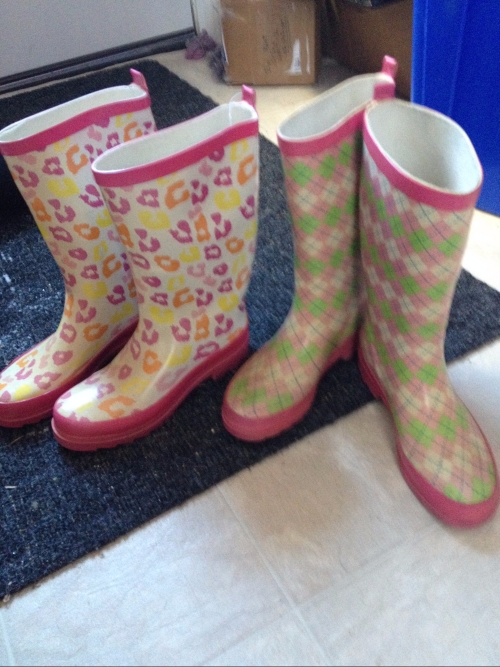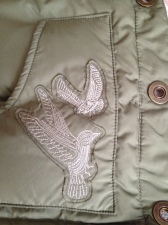
http://jesusisland.com/
An Interview with Escape From Jesus Island creator, Shawn French.
This is an extended version of an interview I had with French that originally appeared in The Reporter, a weekly newspaper out of Waterboro, Maine.
What would happen if someone cloned Jesus?
This is the question Shawn French–(local)Limerick, Maine writer, filmmaker, stand-up comedian, and comic-book author–asked himself twenty years ago in the parking lot of a movie theater. He had just seen a film that graphically illustrated the unintended and dangerous consequences of attempting to create life from ancient DNA. The year was 1993. The movie, of course, was Jurassic Park.
Now, two decades later, French has just published a horrifically creative answer to his question in the form of a graphic comic book entitled Escape From Jesus Island.
A 1987 graduate of South Portland High School, French spent a few years after high school working as a stand-up comedian and then traveling the country for a decade before moving back to Maine in 2000 with his wife, Sue, and stepchildren, Erica, Kim and Robert. He found creative outlets in a variety of genres–writing for the Windham Independent newspaper, writing film and video-gaming scripts, and working on and acting in a dozen independent films. In 2008, French wrote and directed his own movie, The Wrong House.
He was busy, but some ideas grab hold and just don’t let go. The Jesus clone premise had sunk its claws into French, and he began to seriously research both the subject of cloning and the Book of Revelation in the Bible. Starting out as a film script, the story eventually evolved comic book series which combined French’s story and the graphic artwork of illustrator, Mortimer Glum, the finesse of letterer, Peeter Parkker, and the expertise of editor, Shawn Greenleaf. Thanks to the team, plus a successful Kickstarter campaign, the first issue of Escape From Jesus Island, was published in December 2013.
This week, French agreed to answer some questions about the comic book, the creative process, and the team of people working on the Escape From Jesus Island franchise.
Q: Okay, walk me through this slowly. I’m looking at the Escape From Jesus Island website (http://jesusisland.com). What does ‘original full-color, digitally painted comic books series’ mean for those of us who know nothing about graphic novels/comics? Are these traditional comic books? Or are they graphic novels that are more like soft-cover books?
A: Size and shape are like a traditional, old-school comic book, but comics have come a long ways. Instead of the filmsy, newspaperish stock, we print on a heavy, glossy paper in full-color. To the touch, it feels more like a magazine. I’ll drop one off so you can see.
Illustrator Mortimer Glum digitally paints EFJI. He uses a variety of techniques, most of which I don’t understand at all. I love the end result, though. He built fully poseable 3D models of every major character, as well as a full, digital 3D model of Malsum Island, the setting for Act One (Issues 1-8). We can virtually ‘walk’ through the tunnels, anywhere on the island or even inside some of the hospital. Mortimer uses these models to achieve consistency panel to panel. Like a filmmaker, he can pan the camera to the spot he wants and grab a digital snapshot of a background image as a reference. Then he digitally paints on top of that using a Cintiq tablet. It’s amazing to watch. The guy is magic.
Q: Can you give a brief synopsis of the story? What is Escape From Jesus Island about?
A: EFJI is the story of an attempt to clone Jesus by the ReGen Corporation. Years of failed attempts leave behind scores of near-Jesus mutant freaks before they succeed in creating a set of twins, Jesus and his monstrous brother Yeshua. Christ and Antichrist. The Vatican gets word of Christ’s return and sends in an extraction team just as Yeshua is leading a mutant uprising and things get all kinds of crazy. And that’s just Act One, the first eight issues in a 40-issue series.
Q: And of course the question every writer is asked: Where did this idea come from?
A: The original spark of an idea hit just after watching the first Jurassic Park film in 1993. Just, as in, still in the movie theater parking lot. At the time, I was working as a standup comedian and was always on the hunt for comedy material. I wrote a bit that was essentially Jurassic Park, but with murderous packs of Jesus clones in the place of dinosaurs. A remote island testing facility where the Bodies of Christ get loose one stormy night and wreak havoc. The first script was basically a Monty Python sketch.
The story evolved in layers over the years. Because I couldn’t get this Jesus-cloning story idea out of my head, I did a bunch of cloning research and that’s when the story we see now really started to come into shape.
Dolly, the first sheep ever cloned, was attempt number 277. The first 276 were fatally mutated. The realization hit me that if scientists were ever to acquire Christ’s DNA and try to clone him, and you KNOW they would try, they would have to make hundreds of mutant saviors before creating one you could show to the press. I find that equal parts horrifying and hysterical. This
realization was how EFJI turned from a comedy into a horror story.
The next tectonic shift in the story came while spending a full year studying Jesus and Revelation before starting on the comic book scripts. I listened to sermons about the Apocalypse around the clock. I bombarded myself with them, from every possible denomination. It was during this period that I realized EFJI is a story about the Antichrist and the End Days. That the cloning experiment in EFJI results in twins, Jesus and the monstrous Yeshua. Christ and Antichrist emerging from the same womb.
4. I noticed from your bio information that you are also a filmmaker. How do the two interests mesh?
I first wrote Escape From Jesus Island as a film script and I gave serious, serious thought to shooting it as follow-up to The Wrong House, the horror movie I released in 2008. Ultimately, the story was just too big to do it justice on an independent budget. As a comic book, though, there are no cost restraints stopping us from making this as big and bad as it needs to be.
We intend to blur the lines as much as possible between comic book and live action. Many of the primary characters are modeled after actors I trust in Maine. This will allow us to do a Jesus Island character photo shoot with Biddeford photographer Jakk Blood, and a live-action trailer for the comics.
5. Did your background in film help you plot this story? And there are some film terms being used in the marketing aspect, right?
We think of this story as a film or super intense television series. I’m credited in the comic book as director and Mortimer as cinematographer, and we include a cast page. Morty has also done film work, including storyboards, so we both come at this with a cinematic eye. We aren’t using a lot of the super exaggerated angles traditionally seen in comics. The action is framed like we’re shooting it all on camera.
6. You were supposed to be interviewed on CNN’s New Day program, but the segment was canceled. How did you happen to get on CNN’s radar to begin with and why was the segment canceled?
That whole thing was really weird. They approached me out of the blue, wanting me to discuss the comic and backlash on their Faces Of Faith series. Then two weeks in a row, they bumped me on less than a day’s notice, and were kind of nasty about it the second time. The segment had been shifted from producer to producer a couple times and I’m guessing it finally landed on the desk of someone who found it offensive. I can’t figure out any other reason why they would approach me to be on their show and then angrily cancel just hours after confirming. Twice. The funny part is, the focus of the segment was going to be the challenges of distributing an independent comic in the face of backlash from offended people. Then I got backlashed right off the air.
7. The story shares many thematic elements with the Book of Revelation in the Bible. What would you say to someone who accused you of being sacrilegious or disrespectful of Christianity?
The one thing the offended people all seem to have in common is that they haven’t read our comics. They see the title and the Antichrist crucified on the cover and decide they know everything they need to know.
EFJI is essentially the Biblical story of Revelation, using cloning as the catalyst for the prophesied return of Christ and rise of the Antichrist. Many of the things that Biblical scholars say are symbolic, we interpret literally, such as the seven-headed Beast who rises from the sea. We named him Pariah and he is one of our main antagonists.
Oddly, the people who are offended by our comic are the ones who would be most able to catch all the subtle religious references. We have a whole lot of Christians and Catholics among our fans, though. Fortunately, most grownups have the ability to distinguish fantasy from reality and know that a comic book doesn’t pose a credible threat to their belief system.
I get some nasty emails from time to time and doors get randomly slammed in our faces (like with CNN), but it isn’t my responsibility to navigate around the emotional triggers of seven billion people. My job is to tell the most compelling story I can, so I focus on doing that.
To our critics, I would say, “Give me a chance to actually offend you before you get all hot and bothered. We haven’t even gotten to the offensive stuff yet. It’s a 40-issue series. Pace yourselves.”
8. Did you always want to be a writer and filmmaker?
Absolutely. Independent filmmaking really wasn’t a valid option when I was in my 20s. The technology just wasn’t there yet, so I had kind of let that longtime dream go and focus on writing. I’ve never stopped writing stories. I wouldn’t know how to stop. It’s how I process my thoughts. There are two epic stories that I’ve been working on for more than 20 years, building enormous story worlds with the knowledge that I would one day find an outlet to bring the stories to life. Escape From Jesus Island is the first of those stories.
The massive technology leaps in the past 20 years have completely changed independent filmmaking. Now, anyone with the drive and passion to make a film, can. So I of course pounced all over that. I’ve worked on nearly a dozen independent films (mostly playing monster roles) and finally got to write/direct my own movie, 2008’s The Wrong House.
9. The artwork in EFJI is arresting, to say the least! How did you and artist, Mortimer Glum, become collaborators on this project? (And is that his real name?)
Mortimer and I met during post-production on The Wrong House. He’s part of a Portland-based FX group called The Shoggoth Assembly, that handled the practical horror effects in our movie. Morty designed our posters and DVD cover art, which is how we met. We immediately hit it off and I eventually got the courage to pitch the EFJI comics to him. Fortunately, he was hugely into it and we’ve been full-speed ahead ever since.
10. Once you wrote the story and collaborated with Mr. Glum on the artwork, how did EFJI become a published book? Can you talk a little bit about how graphic novels are designed and produced?
Printing in full color is extremely expensive, and we are starving artists, so we started with a Kickstarter campaign, where fans could pledge their financial support for the series in exchange for various perks… signed copies of issues, custom artwork, or even a chance to appear as a character in the series. More than forty of our fans will appear in EFJI in the first eight issues alone.
200 backers contributed nearly $16,000 on Kickstarter to help us get up and running. This allows us to print the first four issues.
http://www.kickstarter.com/projects/1254797765/escape-from-jesus-island-comic-book-series
The actual production of a comic book was all new territory for our team and we made a lot of rookie mistakes as we were getting our workflow figured out. Editor Shawn Greenleaf was a life saver during this stretch. He handled all the technical details with the printers (Transcontinental in Canada)… and there are a LOT of little things that have to be exactly right or the final product will suffer.
The workflow we have settled into now is basically this…
* I write the script (generally 3-4 issues ahead)
* Mortimer breaks it down into panels on the page and sends me rough versions
* I use those roughs to rewrite the script to perfectly fit the images
* Letterer Peeter Parkker takes the new script and puts the words on the page
* Editor Shawn Greenleaf (based in Seattle) picks apart the artwork, text and anything else he can find a flaw in
* We grumble at him, then fix the stuff he suggests
* We all pick through the pages for any last changes
11. Where do you see this project going?
This is more than a comic book series to us. We’re treating this as a franchise from Day One and striking out in as many directions as possible. Portland sculptor Nicolas Genovese has already created our first two gaming miniatures and is working on a full-size action figure; Portland-based horror FX group The Shoggoth Assembly will be creating some EFJI gory goodies, including character masks; Event Screen Printers in South Portland is working on T-shirts; we have an EFJI board game in the works; and we’re in talks that could lead to EFJI as a full radio drama.
Our crew know a whole lot of amazingly talented people and we have an All Hands On Deck approach to making this series everything it can be.
12. Will you have a booth at any comic book conventions? How has the reception been so far with readers/fans?
We’ll be hitting a lot of conventions in the Northeast this first year and hopefully can expand a bit further in 2015. We first premiered our trailer at Coast City Comicon (South Portland) in 2012 and Mortimer Glum held an art workshop again there in 2013.
Reception from fans and critics has been amazing so far. Clive Barker, a hero of everyone on the Jesus Island team, even checked it out and offered us an official endorsement. http://www.facebook.com/officialclivebarker/posts/422151551226901
It has been a crazy rollercoaster ride already and we’re just getting started.
13. Is there anything else our readers should know about you or EFJI? Where can readers buy the book?
This map shows all the stores currently carrying us and our network is increasing all the time: https://mapsengine.google.com/map/edit?mid=ze8U5uNxcdYA.kSUrLlBpTwO8
Current options in Maine are: Coast City Comics (Portland), The Complex (Scarborough), Game Box (Topsham) and Top Shelf Comics (Bangor)
We’re also available on Amazon (www.amazon.com/Escape-Jesus-Island-Shawn-French/dp/0991186419).
And we sell subscriptions and signed artwork at our online store: http://escapefromjesusisland.bigcartel.com

















You must be logged in to post a comment.